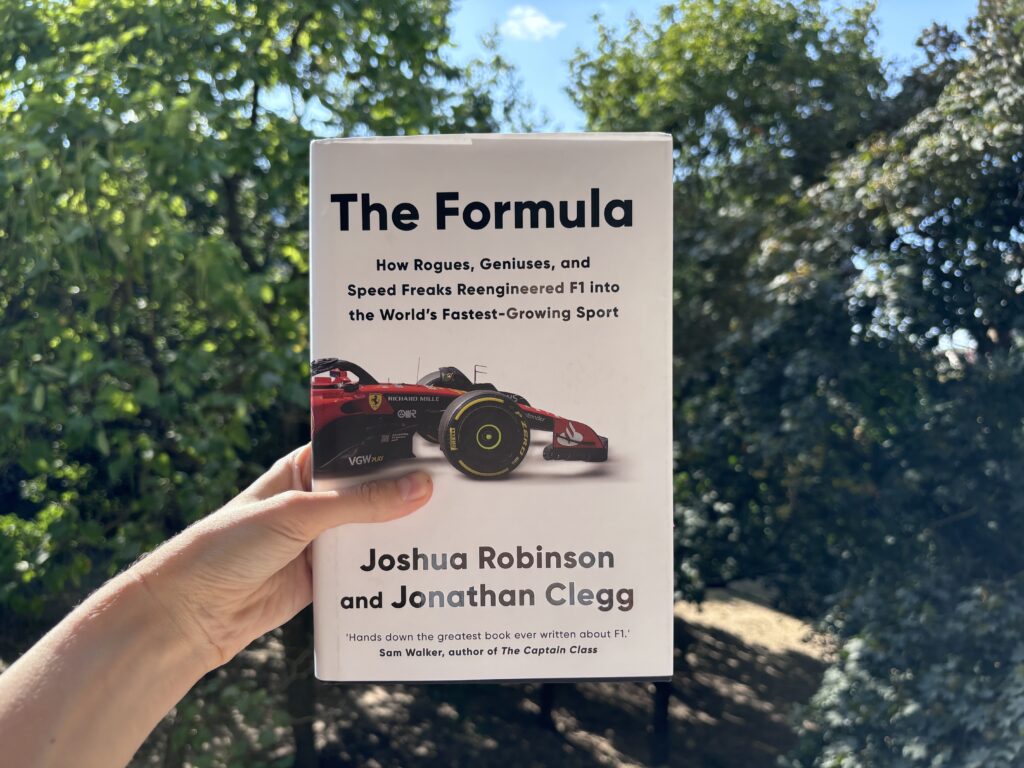When I started reading this book, I thought it was like Drive to Survive, but in a book form: showing us the heroes of F1 and explaining how looking for loopholes in the regulations advances the technology of the everyday world – and it 100% appealed to my idealist personality. Then somewhere around the part Bernie Ecclestone showed up, it started to feel like looking at a nicely built-up play, where someone grabs you by the hand to drag you backstage and pulls away the curtain. And there you see all the ugly – the scandals, the unfairness and how much it is actually about money.

I came around at the end, meaning I managed to not fall out of love with F1, but I have to tell you that I did question why the hell I like this racing circus. Because this was what this book was saying: the audience is the most important part of it and how F1 caters to its viewers is essential, because it is what keeps the sport alive. Or maybe I should just say show business instead of sport. I guess my answer was that not everything is rotten, and I found that in some way, F1 regulates themselves (even if before that goes into crazy bad directions) – which really is a saving grace and in the grand scheme of things just shows that it can be better than those scandals, money issues and dark secrets, and that humanity is not a lost cause after all.
I loved this book, because it was funny and insightful. I don’t know much about the authors, but I found 2 mistakes (me, who is in no way an expert in F1 history), which made me question the legibility of the whole thing. Especially that there are no direct references to where the information comes from, only a list of books at the end and people mentioned who told their stories. This latter part also makes me think how objective a book like this can be? Probably not at all, and that is not a problem, it’s just good to be aware of it.
The mistakes I found were Valtteri Botas as an Estonian (which I really had to look up, because maybe I was wrong) – this is not true, he is still very much Finnish. And the other is kind of a big one: nobody has died during racing in F1 since Senna. While this can be factually true, Jules Bianchi had suffered so severe injuries during a race, that he passed away a few months after his accident – and forgetting this or not mentioning it because of some kind of PR reason, I find disrespectful to his memory. Especially considering that the introduction of the halo is the legacy of this accident (that potentially saved several drivers from injuries to say the least).
So then, if the book had such serious mistakes and also talked about the nasty past of the business, what on Earth did I like about it so much? All the little personal stories (some of them I heard at the Williams Center, but said a different way, so there we go about the subjective part), the heroes of the old days of glory (Senna, Schumacher, Frank Williams), some history of the teams and of course the current era, which is where there was an actual chapter of DTS – so I could feel that it is where I joined the big stream of the history of F1.
While it is absolutely not flawless and deals with the dirty aspect of F1, I found that I’m thinking about it and I want to pick it up and read on. It also gave a good overview of the history and mentioned all the big names that you should know about. So, I think if someone is more of a bookworm than a Netflix person, this book can also be a good way of pulling more people in the world of Formula 1.
